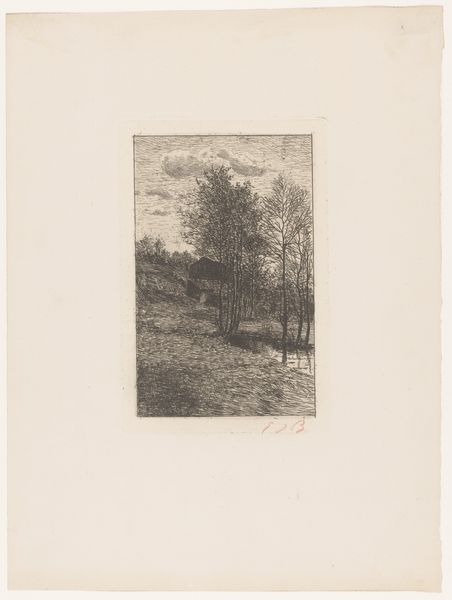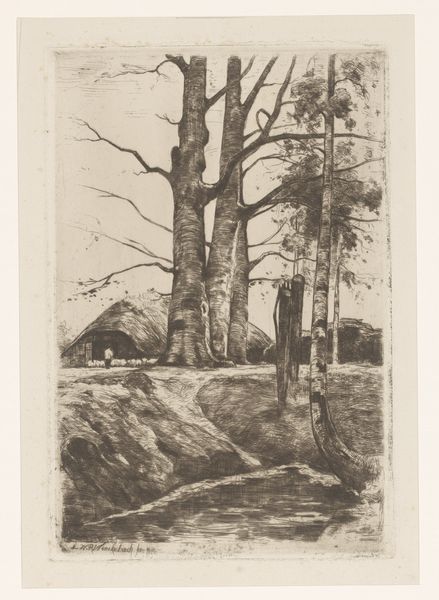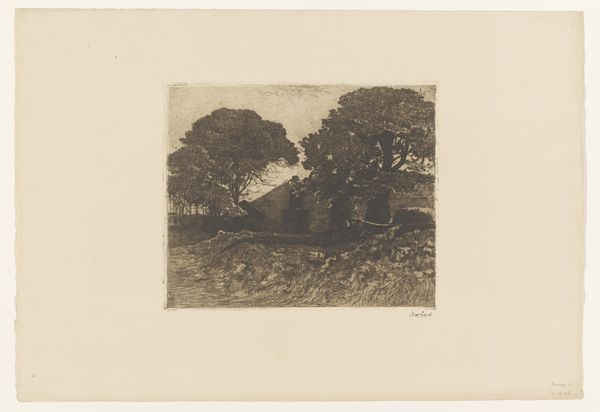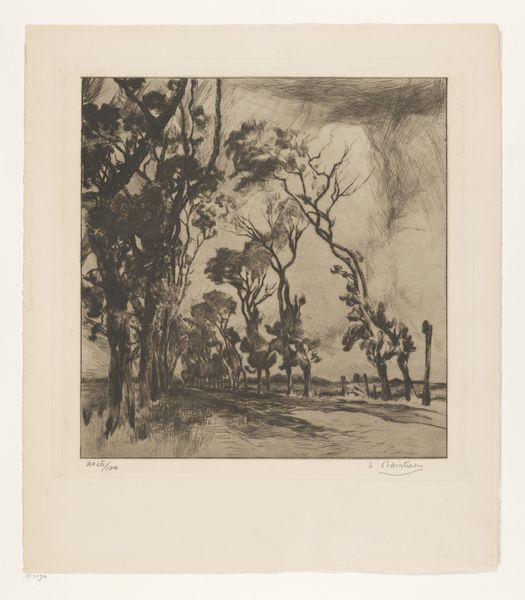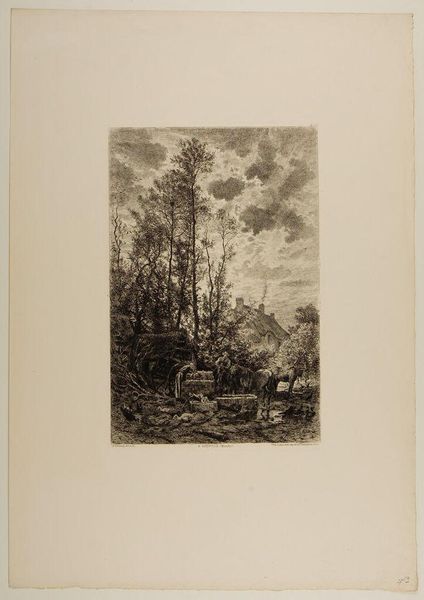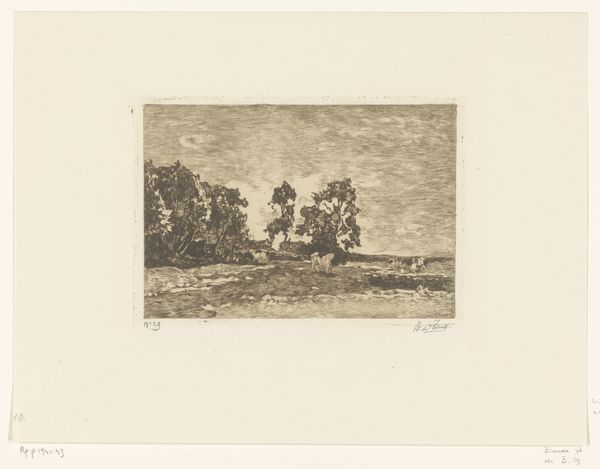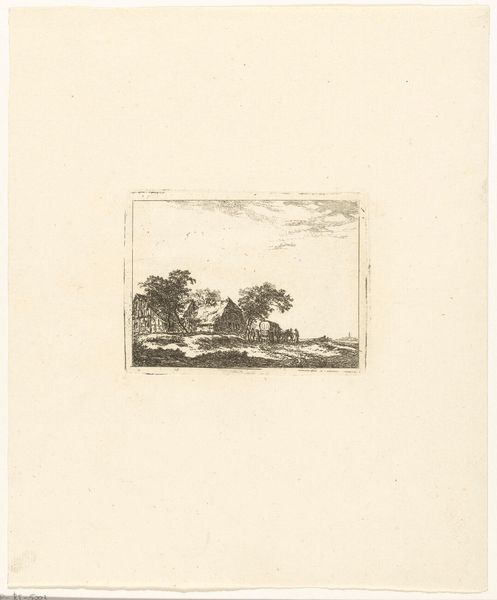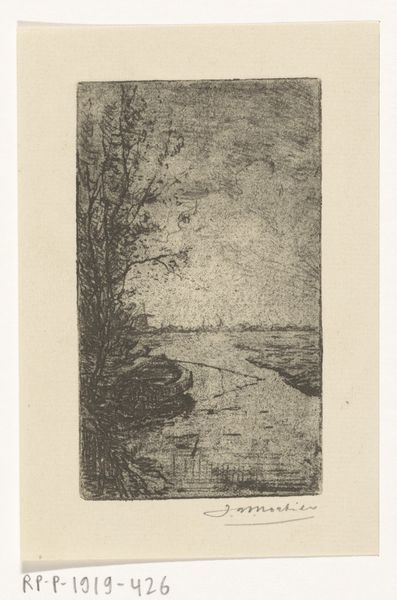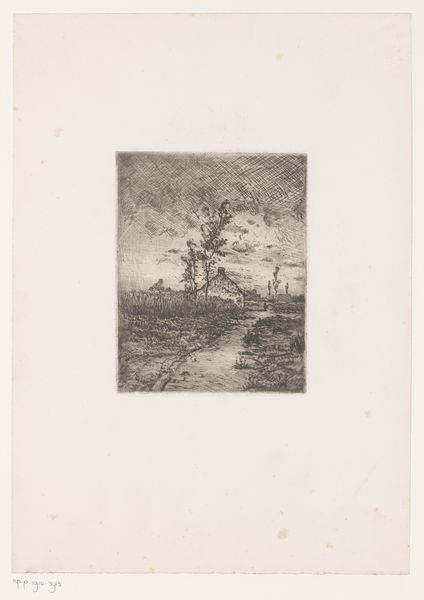
drawing, print, etching, paper
#
drawing
# print
#
etching
#
landscape
#
paper
#
monochrome
Dimensions: 7 15/16 x 14 15/16 in. (20.16 x 37.94 cm) (plate)11 9/16 x 8 13/16 in. (29.37 x 22.38 cm) (sheet)
Copyright: No Copyright - United States
Curator: This etching by Philip Little, entitled "By the River," created in 1915, presents us with a rather striking composition. What are your immediate thoughts? Editor: Well, initially, I'm struck by its melancholic stillness. The heavy blacks of the tree and building are reflected in a textured, almost turbulent, river, hinting at unrest. There’s a somber mood evoked here. Curator: Indeed. Note the skillful use of line – the varying densities create depth and shadow, particularly in the building’s structure and in the articulation of the tree's foliage. Observe also how the reflection nearly mirrors the solidity above, creating a compelling symmetrical interplay. Editor: But it’s not just aesthetic. Consider the historical context. The year is 1915 – World War I is raging. While seemingly idyllic, landscapes from this period often served as metaphors for societal anxiety. This river, this refuge…is it threatened? Are those reflections a distorted reality? Curator: A plausible interpretation. Yet, looking at its formal elements, one can admire the artist's mastery in conveying the textures through hatching and cross-hatching techniques in printmaking, giving a tangible quality to the intangible atmosphere of the waters. Notice how light seems both present and absent. Editor: And absent perhaps is the working class often depicted along rivers during this era. Is this an intentional erasure? The building looks almost abandoned. This emptiness speaks volumes, suggesting the broader displacement and trauma rippling across society at the time. Perhaps, this place along the river is now the site of traumatic loss. Curator: That said, focusing on the forms, there’s something elegant in how the heavy form of the building is grounded and visually softened by its almost chaotic reflection in the water. It strikes a visual balance and counterweight that feels profoundly resolved. Editor: It invites many complex readings depending on one's historical perspective. I am seeing the early anxiety rippling beneath the surface of American modernity during war and societal strife. Curator: Agreed. There’s an inherent tension – both in the composition itself and the historical backdrop – which contributes to the piece’s enduring impact. Editor: Ultimately, it’s a reminder of the complex layers—formal and social—that reside within a seemingly simple landscape.
Comments
No comments
Be the first to comment and join the conversation on the ultimate creative platform.

